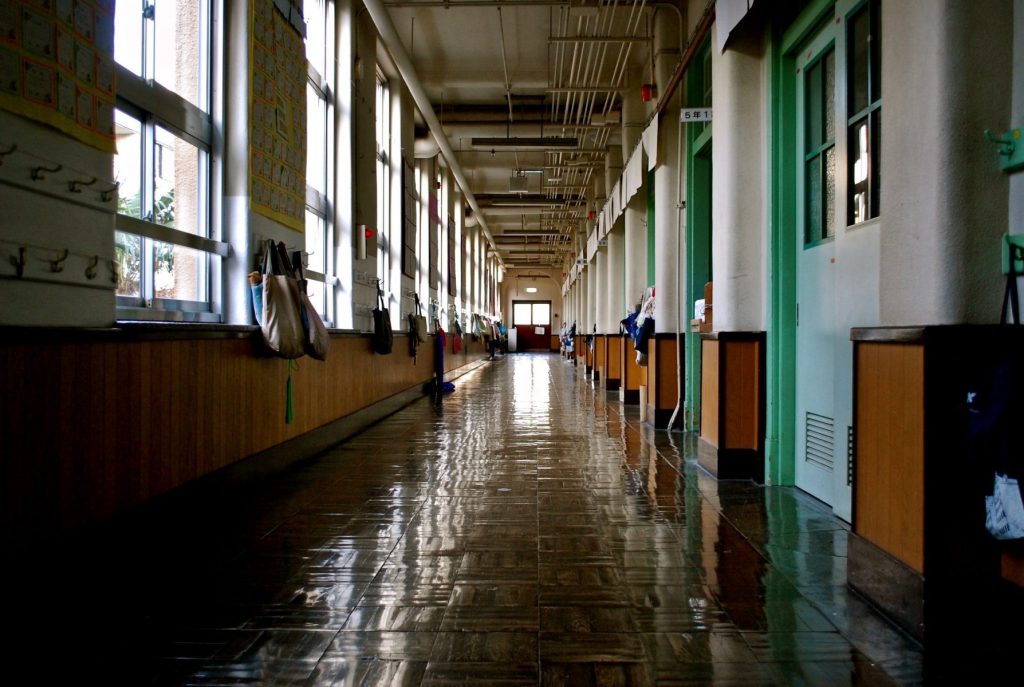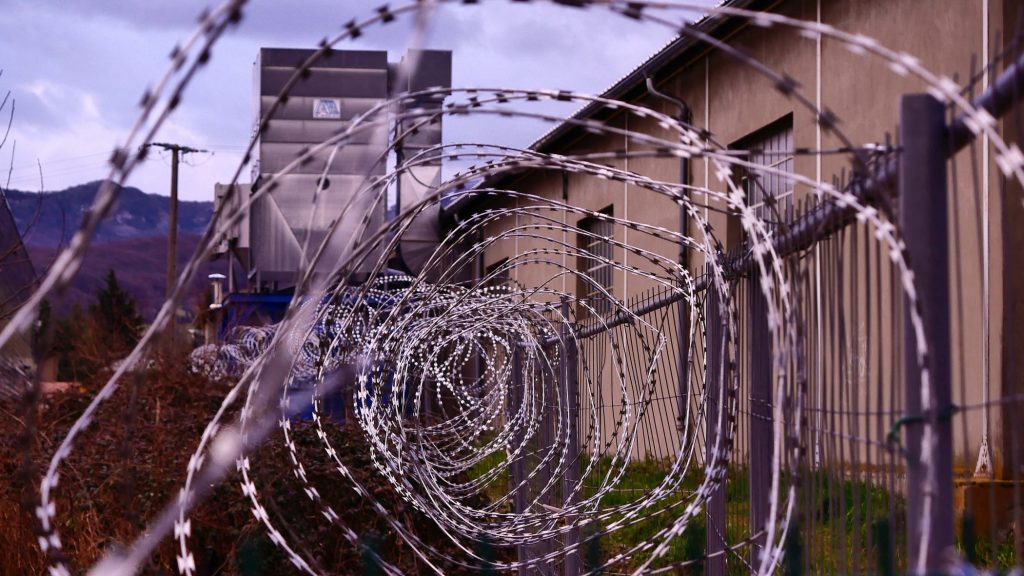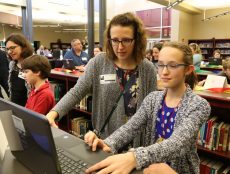
Articles
Editor’s Picks
Higher Education
K-12
Online Educational Access: The Promises and Reality
By Cait Etherington
December 21, 2018
Online learning is often assumed to hold the potential to bring quality education to people who may otherwise have only limited access to education or no access at all. From rural communities in North America to refugee camps, online learning is changing how and where people learn. But is online educational access living up its promises? This eLearning Inside report surveys five key areas of educational access.
Expanding Educational Access in Rural Communities in the United States

Even in the 21st century, growing up in rural areas of the United States and Canada often still means having limited access to education. While some students have to travel over an hour to attend school, others have limited course and program offerings (e.g., no AP-level courses or gifted programs). As a result, rural students often face higher barriers of entry compared to their urban peers when it comes to getting into top-ranked universities. Online learning is consistently held up as one potential way to overcome these barriers–but is it working?
Over the past two years, eLearning Inside has reported on several online educational access programs for youth living in rural and remote regions. These programs include Illinois’ current pilot program for rural students, and on the advising side, platforms such as myKlovr that offer rural students access to quality college advising. In rural communities, however, just getting online can often be a challenge. As reported on eLearning Inside in September 2018, 2.3 million American K-12 students still don’t have access to broadband internet.
Barriers also exist at the postsecondary level where there are still many educational deserts. An estimated 41 million American adults lack access to a nearby physical university. While online educational access may appear to be an obvious solution, among those 41 million American adults without access to a physical university, 3 million also lack access to an internet connection suitable for online education.
For now, the promise of using online learning to expand educational access in rural areas remains limited to those living in rural areas where broadband access is already widely available.
Supplementing Education in America’s Struggling Urban Schools

While students living in rural areas often lack access to a wide range of courses and school programs, many of their urban counterparts are also suffering.
In 2018, Detroit schools reported the lowest results on the National Assessment of Educational Progress. The Detroit Free Press highlighted just some of the troubling results of the 2018 report. At the fourth-grade level, only 4% of Detroit students scored at or above proficient in math, compared to 36% statewide. The results in reading were nearly as low with only 5% of Detroit’s fourth-grade students scoring at or above proficient, compared to 32% statewide.
At least some educators, researchers, and community leaders believe online education might be a way to supplement the programming already happening in struggling urban schools. One such program is Coursera’s collaboration with Michigan State University, the Berklee College of Music, and Detroit’s Making It Happen Foundation. The program aims to bring music and art courses to students in some of Detroit’s struggling inner-city schools.
While online learning may appear to be a viable way to supplement programming in struggling schools, some educational researchers worry that online learning is not be the best option.
A 2015 study published in the Journal of Research on Educational Effectiveness found that students who are already struggling also struggle online. In the survey of 1,224 ninth graders who failed algebra in 17 Chicago public high schools, students were randomly assigned to take either an online or face-to-face algebra recovery course. The researchers found, “Compared to students in face-to-face credit recovery, students in online credit recovery reported that the course was more difficult, were less likely to recover credit, and scored lower on an algebra post test.” By contrast, another recent study tracking the progress of students in Maine and Vermont who were already working above their level and looking to move ahead found that the online format enabled them to excel even further.
On a related note, there is also growing evidence that entrenched biases are often just as prevalent online as they are in traditional classrooms. One recent study by researchers at Stanford University found while online programs often attract a more diverse student body, racial and gender biases persist.
Education Behind Bars

While likely not anticipated when online learning was first developing, in the twenty-first century, online learning continues to transform access to education behind bars. In some countries, online education programs are well established. By 2008, 54 of Sweden’s 57 prisons were already part of a national network allowing students moving from one prison to another prison to continue studying with the same instructor. In the United States, online access to education in prisons, however, is nearly unheard of. Government policies and limited technological access are both to blame.
While education programs were once popular in U.S. prisons, in 1994, Congress voted to remove Pell grant access to prisoners. Today, only a fraction of U.S. prisoners have access to an education behind bars, and those who do usually only have access to mail-based correspondence courses. There are a few exceptions, and at least one company is actively fighting to break down barriers.
In early 2018, eLearning Inside talked to Michael Peterson, director of business development, at Edovo, which is one of the few edtech companies currently working to expand online learning behind bars. As Peterson explained, “Edovo was founded by Brian Hill in 2013. During his first year at Northwestern University Law School, he worked on a Social Impact Bond initiative for the largest single-site jail in Chicago. Brian dreamed of a flexible, customizable experience where users could choose what they learn and explore entertainment, job training, and reentry resources … By [the] fall of 2014, Edovo launched 40 tablets in its first facility, [the] Philadelphia Prison System. Since then Edovo has made waves in the industry but is committed to supporting people connected to incarceration.”
Despite the impact of Edovo, most of the 2.3. million people currently living behind bars in the United States have yet to benefit from the expanded educational access online learning offers. In this case, breaking down access barriers will require major policy reforms and a renewed commitment to support education in U.S. prisons.
Online Educational Access Around the World

Online learning is now a global phenomenon. Navitas Ventures 2018 report on global edtech hubs found that while Beijing, the Bay Area, and New York City may be the world’s top-ranked edtech hubs, Cape Town, Nairobi, Kuala Lumpar, and Sao Paulo are also in the top 20. As online learning pushes into regions around the world, the potential to leverage it to broaden educational access continues to grow. Unfortunately, in many regions, the promise of online educational access also continues to face major obstacles. Nowhere is this more evident than on the continent of Africa.
As reported in Facing Forward, a March 2018 report released by The World Bank, “Africa has made considerable progress in boosting primary and lower secondary school enrollment, but some 50 million children remain out of school, and most of those who attend school are not acquiring the basic skills necessary for success later in life.” The situation is also dire at the postsecondary level. Overall, only 6% of young people in Sub-Saharan Africa are currently enrolled in higher education institutions while the global average is 26%.
The World Bank’s report does acknowledge the role new technologies could play in responding to Africa’s educational needs at the K-12 and postsecondary levels: “Faced with the constraints of infrastructure and connectivity … the introduction of technology must necessarily be an iterative process. Nevertheless, the use of technology and digital resources must be actively considered, given the high cost of building traditional laboratories and libraries and the low level of teacher subject knowledge and skills.”
In April 2018, eLearning Inside reached out to Godfrey Mayende of Makerere University in Uganda to learn more about the 1st International Conference on Open Distance and eLearning and along with details concerning the situation in his own country. Mayende emphasized that in Africa, and specifically in Uganda, there is a growing demand for education and hopes online learning can be used to meet this demand. But concerns about access persist.
As Mayende explained, “It is true, there is a huge demand for postsecondary education in Africa and the current higher education institutions lack the prerequisite infrastructure to respond. Open distance and eLearning are promising in bridging the gap. They can help learners learn while away from the university, which can avoid strain on the existing infrastructure … Online learning also caters to working adults who want to return to their studies.”
But Mayende also emphasized, “There are many challenges, including lack of knowledge about open distance and eLearning from top management. This can frustrate the champions for launching these programs. Internet connectivity is still a problem too, mostly in places outside capital cities.”
Bringing Education to Refugee and Migrant Populations

The United Nations estimates that there are currently close to 70 million “forcibly displaced” people in the world. While some of these people are displaced in their own nations, many more are living in refugee camps or are migrants seeking asylum in another nation. When it comes to education, both the refugee and migrant populations face huge obstacles.
As reported on eLearning Inside in April 2018, the number of displaced people in the world continues to grow and so does the amount of time people spend displaced. In 1993, refugees spent on average nine years before they either returned home or were granted asylum in a new country. This timespan is now twenty years on average. As a result, a growing number of children and young adults are now completing their entire educations from refugee camps.
UNHCR data estimates that 3.5 million refugee children currently lack access to education and only 61% of refugee children attend elementary school. On average, around the world, 91% of children attend elementary school. Several organizations are making an effort to bring online learning to displaced children, specifically in refugee camps (among other initiatives, World Refugees School).
At the postsecondary level, there are also a growing number of programs available to meet the educational needs of refugees. In September 2018, Coursera for Refugees, which focuses on offering free access to university courses and programs, celebrated its two year anniversary. So far, 11,000 refugees have enrolled in Coursera courses and received over 8,913 recognized credentials in subjects including language skills, data science, and leadership. Other programs for refugees and migrants include Germany’s Kiron and Italy’s program for refugees and migrants based at the Università Telematica Internazionale.
At the K-12 and postsecondary levels, online learning initiatives in refugee camps and migrant communities continues to be marred by limited access to WiFi. In Jordan, which has one of the highest percentages of refugees in the world, the private sector is taking steps to fix this problem. In March 2018, IEC Telcom Group and Al Yah Satellite Communications Company announced plans to launch of a humanitarian satellite project, YahClick Wi-Fi. While the YahClick WiFi project is a step in the right direction, there is an urgent need for similar projects to launch in many other regions.
Online Educational Access: Future Challenges
As this report demonstrates, there are now programs and initiatives around the world that are helping people access education in educational deserts. But there are also several challenges that lay ahead.
To begin, many of the programs featured in this report are targeted programs that are spearheaded by online course providers or non-profit organizations. While such initiatives are certainly welcome, it is unclear whether these programs can be sustained over time. The promise of online education will only be fully realized if governments at the regional and national levels commit to supporting online learning on a long-term basis.
Second, in North America and around the world, communities that stand to benefit most from online learning often have little or no stable access to the internet. For the promise of online learning to be fully realized, we will also need to finally bridge the digital divide.
The final challenge, and the one that is most troubling, concerns the growing body of evidence that suggests online learning may be best suited to supporting the educational needs of learners who are already excelling rather than those most at risk.
Feature image Maya Maceka c/o Unsplash.









[…] Continue reading the article here […]
[…] and pass exams, it also helps learners count down to their exam and synchronize it all with a calendar. The app can send you alerts and notifications concerning changes and inconsistencies in your […]
[…] As a result, under all this pressure, you will never be able to enjoy the process. So, you have to stop procrastinating […]
[…] in big cities. It’s no secret that the lifestyle of people living in metropolitan areas is stressful and busy – sometimes they don’t have enough time to walk their […]
[…] check if this is a course worth most of your time, you should ask yourself, why did you choose it in the first place? What are the more essential […]
[…] stage but even when you become a very experienced businessman. For instance, they can share some management tips or help finish some tasks that can take a lot of […]